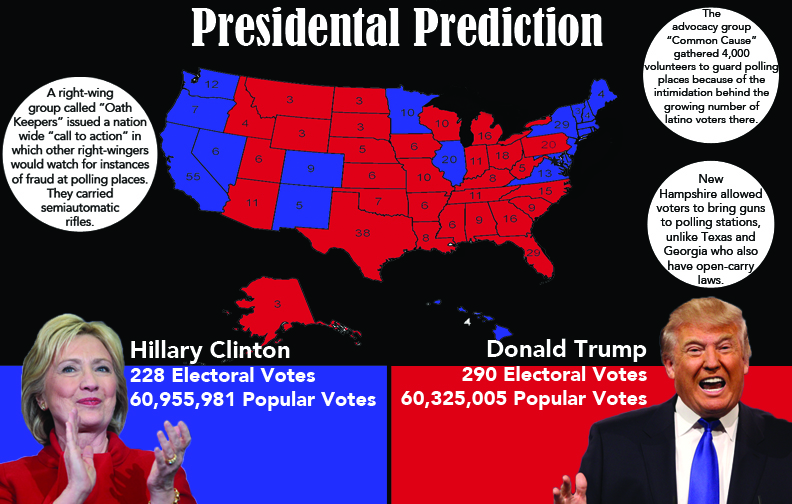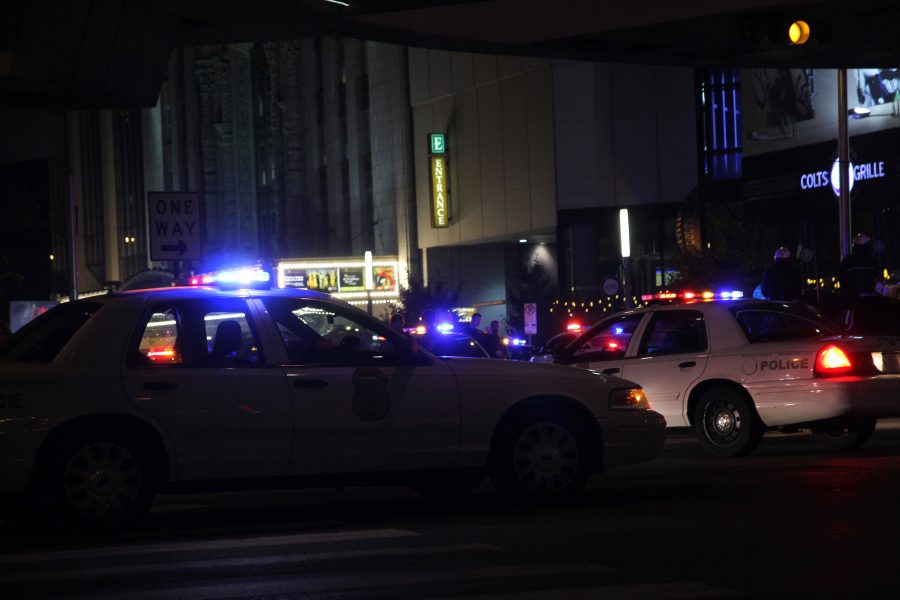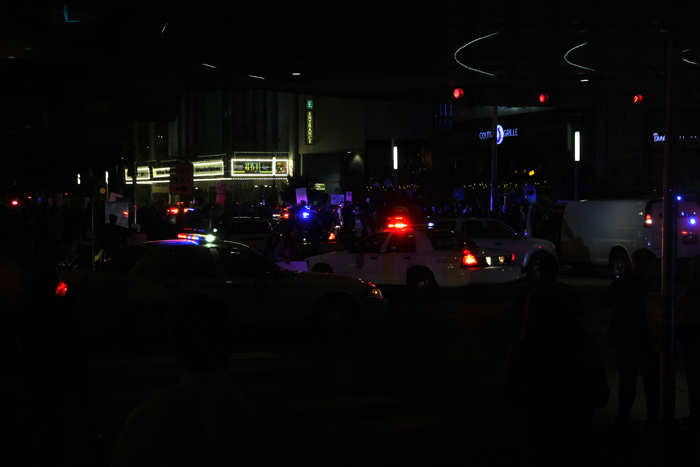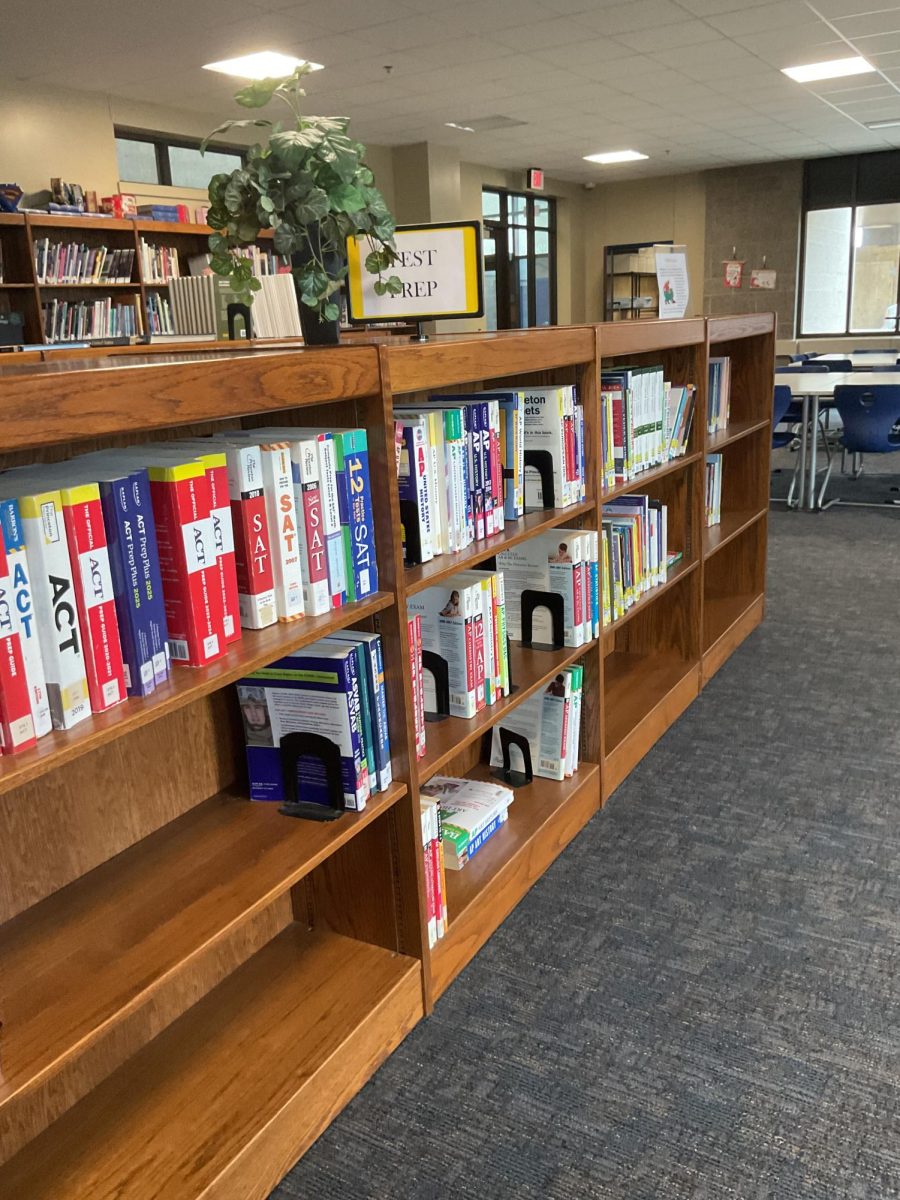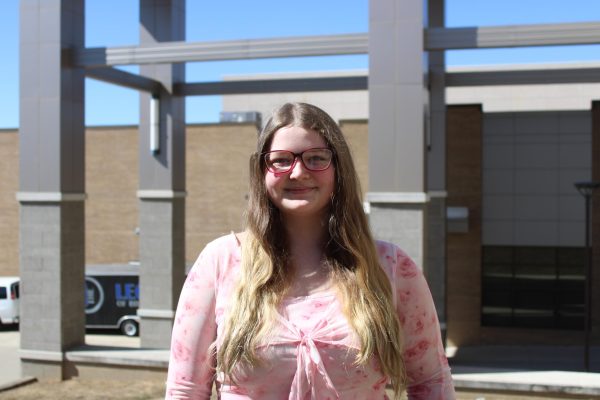Indianapolis Protests President-Elect
The inside scoop from students who witnessed it
Police block intersection of Washington Street and Capitol Avenue as anti-Trump protestors mobilize.
November 13, 2016
Above Washington Street in the Indianapolis Artsgarden, a wedding party celebrated a recent union. Luminous blue panels surrounded the gathering, blocking any outside noise or sights, encapsulating them in their moment of joy, dance and song. People made speeches and cheered under the already darkened night.
Below, police cars began to block off the intersection of Washington Street and Capitol Avenue. A mass of people protesting the election of Donald Trump and Indiana Governor Mike Pence had moved from the steps of the Capitol to the street. Police on horses pushed the crowds back, people overflowing from sidewalk to street.
Protesters began gathering in front of the Capitol around 4:30 p.m., where individuals spoke into microphones, condemning the new President-elect as a demagogue and racist. “Not my president,” signs and shirts read.
“People were chanting and listening to people talk about why they were personally upset by the results of the election,” reporter Max Lewis said. “It did get heated at a few points because there were two Trump supporters that interrupted the rally, and a man [drove] an army truck around with a “Trump/Pence” sign on the side, but everything was peaceful while I was there.”
The protest then moved to the streets.
“The original purpose was to have a peaceful protest and rally, and a lot of people let their pride get in the way of the walk,” Jenni Hoefling, a protester and junior at Purdue University said.
The mass of protesters blocked Illinois Street briefly. Police began to block off areas of the road around Monument Circle to contain protesters to sidewalks. An equine force was later introduced to push the mob back.
“Blocking the street is against what [the protestors] were supposed to do,” Hoefling said. “[The police] started spraying pepper spray and shooting rubber bullets.”
A protester was seen leaving the blocked area with a welt on her side, which she claimed was from a rubber bullet.
“There have been rumors of a second wave of people joining the march [who] were not at the statehouse,” Hoefling said. “Many are saying that they’re the ones who enticed the police and got things to escalate to the point that they did.”
Police remained actively involved until the protest dissolved.
“There were many kind police officers, but some of them were out of hand,” a protester who identified herself as Falisha said. “My friend was harassed by a police officer. She was trying to help people safely cross the street and an officer almost pushed her to the ground and repeatedly got in her face and was screaming at her.”
Two officers were reported injured from rocks that protesters allegedly threw into the police force, chanting “This is what democracy looks like.” Seven arrests were made.
The driving forces behind the rally and march were two concepts; one, that President-elect Trump is ill-fit to lead the nation, and two, that the Electoral College is undemocratic.
The first concept is largely based on Trump’s controversial image. The “Trump Tapes” released late in the election cycle painted him as a sexist to many of his opponents, while the KKK’s endorsement of Trump left some voters uneasy.
“The thing that bothered me is that [Donald Trump] is not qualified to run this country,” Ron Leffler, a protester from Greenwood, Ind. said. Leffler was attending the rally with a sign that read “Vietnam veteran against Trump” with his granddaughter, Taylor Calhoun.
“I think he’s a bigot and racist [and] a sex predator, the way he talks about women [and] degrading them,” Leffler said. “He’s going to be commander in chief? I don’t think so. He will never be my president.”
The other concept, that the Electoral College is undemocratic, was prevalent in the rally. Signs in the crowd read “Eliminate Electoral College” and “One Person, One Vote.” This stems from the issue of the popular vote compared to the electoral vote. America has faced this before; former President George W. Bush won the Electoral College (and consequently, the presidency) in 2000 while former Vice President Al Gore received about 540,000 more total votes than Bush.
Absentee votes have not all been received and totaled, but it is projected that Democratic nominee Hillary Clinton won the popular vote by a larger margin than Al Gore. This, on top of the controversial nature of the election, has sparked a national outrage against the Electoral College.
“I honestly think that the Electoral College just needs to go,” junior Camari Dodds said. “It’s not good that, despite popular vote, the people are still not getting what they’re wanting.”
Technically, Trump has not won the electoral vote yet. Electors from each state will vote on Dec. 19. Congress will then count the votes in early January. It is legal and possible that electors could vote against what their states voted and choose to elect Clinton as the next President of the United States. However, such an act would be political suicide for the chosen electors and is wholly unlikely. Additionally, Clinton has already conceded, and the likelihood of her supporting a revolt by the electors is slim.
“I don’t expect anything big to happen,” Calhoun said. “Obviously, [Trump] has been elected, even though Hillary won the popular vote. I don’t think he will not be president. I just hope that people around the country will see that so many people in the majority know that he is not a good person and I think that’s very important. That’s why [my grandpa] came here- to stand in solidarity with those that have been disenfranchised.”
Protests like the one in Indianapolis have sparked across the nation, including one in Little Rock on Nov. 9. However, some have turned to violence, inciting fear.
“The reaction to the protest at the [Indiana state] capitol really terrifies me,” junior Emily Culbreath said. “I want to be someone who joins those protests, someone who makes signs, someone who yells chants. It scares me because these people are getting shot at with rubber bullets and pushed around just because they are voicing their opinion. For [police] to come and run [protesters] down with guns and horses, it’s just too much.”
